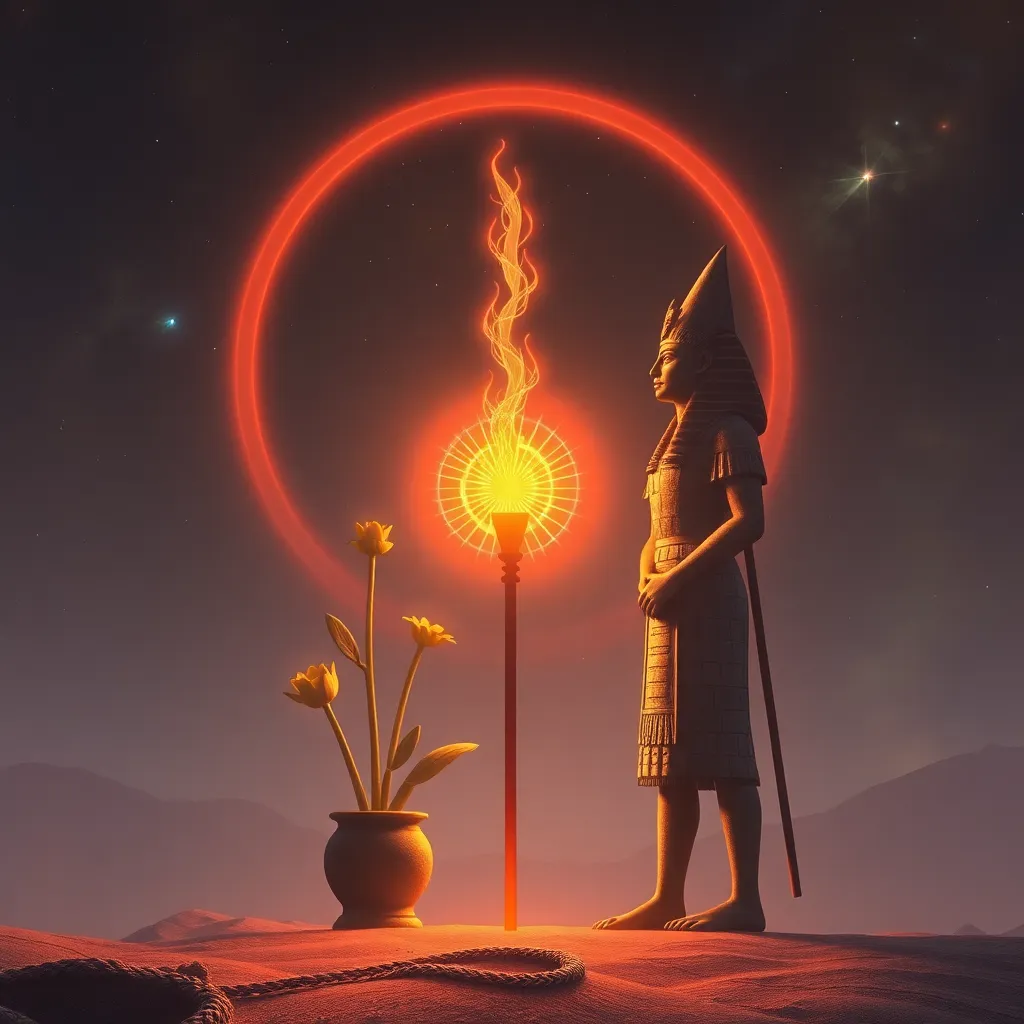The Connection Between Sacred Plants and Egyptian Festivals
I. Introduction
In ancient Egyptian culture, sacred plants held profound significance, both spiritually and practically. These plants were not merely part of the landscape; they were intricately woven into the fabric of religious beliefs, rituals, and everyday life. From the blooming lotus to the towering papyrus, each plant symbolized various aspects of life, death, and the divine.
Egyptian festivals, which played a crucial role in the society’s religious and agricultural calendar, were occasions for communal celebration, ritualistic practices, and offerings to the gods. This article aims to explore the relationship between these sacred plants and the festivals that celebrated them, revealing how they shaped ancient Egyptian culture and continue to influence modern interpretations.
II. Historical Context of Sacred Plants in Ancient Egypt
The ancient Egyptians revered several key plants, each with its own symbolism and spiritual significance:
- Lotus: Often associated with creation and rebirth, the lotus flower symbolizes the sun and the emergence of life from the waters of chaos.
- Papyrus: A symbol of truth and justice, papyrus was crucial for writing and record-keeping, linking it to the divine aspects of knowledge.
- Sycamore Fig: This tree was believed to provide protection and nourishment, often associated with the goddess Hathor.
Archaeological findings, including plant remains and depictions in tombs, reveal the deep-rooted connections between these plants and the beliefs of the ancient Egyptians. Texts and inscriptions further illustrate their importance in daily life and religious practices.
III. Major Egyptian Festivals
Several prominent festivals are central to understanding the role of sacred plants in ancient Egyptian society. Notable festivals include:
- Wepet-Renpet: Known as the “Opening of the Year,” this festival marked the start of the agricultural cycle.
- Opet: Celebrated in honor of Amun, this festival involved a procession from Karnak to Luxor and emphasized fertility and renewal.
- Khoiak: This festival was dedicated to Osiris and involved rituals of resurrection and the agricultural harvest.
These festivals were integral to the religious calendar, linking agricultural practices to the divine. They provided an opportunity for the community to come together, celebrate, and honor their gods through various rituals and offerings.
IV. The Role of Sacred Plants in Festival Rituals
During festivals, sacred plants played a vital role in rituals and celebrations:
- Offerings and Altars: Plants were often used in offerings to deities, adorning altars and enhancing the spiritual atmosphere.
- Rituals: Many rituals involved sacred plants for purification, healing, and protection, with specific plants designated for different ceremonies.
- Symbolic Meanings: Each festival had plants associated with it, carrying specific meanings that enhanced the spiritual significance of the celebrations.
These practices underscored the belief in the plants’ power to connect the physical and spiritual realms, facilitating communication with the divine.
V. Case Studies of Specific Festivals and Their Associated Sacred Plants
To illustrate the connection between sacred plants and festivals, we can look at specific examples:
A. The Lotus and the Wepet-Renpet Festival
The lotus flower, emblematic of rebirth, was central to the Wepet-Renpet festival. As the new agricultural year began, the lotus symbolized the awakening of life and renewal, making it a key offering during the celebrations.
B. The Papyrus in the Opet Festival
Papyrus plants were integral to the Opet festival, representing truth and the divine order. Offerings made from papyrus were presented to Amun, reinforcing the connection between nature and the gods.
C. The Sycamore Fig in the Khoiak Festival
The sycamore fig played a protective role during the Khoiak festival, associated with Osiris. Rituals included the use of its branches to ward off evil and ensure a bountiful harvest, highlighting its significance in agricultural prosperity.
VI. The Influence of Sacred Plants on Art and Iconography
Sacred plants were prominently featured in ancient Egyptian art and iconography:
- Temple Reliefs: Many temples displayed intricate reliefs depicting sacred plants, emphasizing their role in religious practices.
- Tomb Paintings: Tombs often featured paintings of plants, signifying their importance in the afterlife and spiritual journey.
- Cultural Significance: Art reflected the beliefs and values surrounding these plants, serving as a reminder of their divine connections during festivals.
Through art, the cultural significance of sacred plants was immortalized, ensuring that future generations would understand their importance in both life and death.
VII. Modern Interpretations and Revivals
In recent years, there has been a resurgence of interest in ancient Egyptian plant symbolism, influencing contemporary practices:
- Modern Festivals: Some modern celebrations draw inspiration from ancient traditions, incorporating sacred plants into their rituals.
- Ecological Awareness: An increasing appreciation for the environment has led to a renewed focus on the significance of these plants in ancient cultures.
- Cultural Preservation: Efforts are underway to preserve knowledge about sacred plants and their roles, ensuring that this heritage is not lost.
This revival showcases the lasting legacy of ancient Egyptian traditions and their relevance in today’s world.
VIII. Conclusion
The interconnectedness of sacred plants and Egyptian festivals reveals a rich tapestry of spirituality, culture, and community. These plants were not merely flora; they were embodiments of divine principles that guided the ancient Egyptians in their rituals and daily lives.
As we reflect on the lasting legacy of these traditions, it becomes clear that understanding the significance of sacred plants enriches our appreciation of ancient cultures. Preserving this knowledge is crucial, as it connects us to our history and reminds us of the profound relationship between nature and spirituality.




